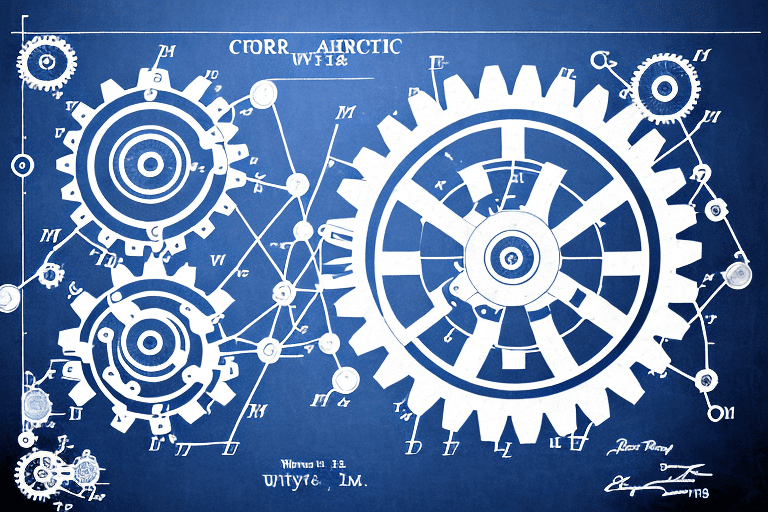In the world of intellectual property, two terms that often come up are “patent harmonization” and “patent cooperation.” While these terms may sound similar, they have distinct meanings and play different roles in the global patent system. Understanding the difference between patent harmonization and patent cooperation is essential for anyone involved in innovation and the protection of intellectual property rights.
Understanding Patents
Before diving into the specifics of patent harmonization and patent cooperation, it’s important to have a clear understanding of patents themselves. Patents are legal documents granted by governments to inventors, giving them exclusive rights to their inventions for a specified period. These rights include the right to produce, use, and sell the invention, as well as the right to prevent others from doing so without permission.
Patents are crucial for innovation as they incentivize inventors to invest time, resources, and effort into creating new and useful technologies. They protect inventors’ rights, encourage further research and development, and contribute to economic growth.
The Basics of Patents
When an inventor files a patent application, the patent office examines the application to determine whether the invention meets certain criteria. These criteria typically include novelty, non-obviousness, and industrial applicability. If the application meets these requirements, the patent office grants a patent, providing the inventor with legal protection and exclusive rights over their invention for a specific period, usually 20 years from the filing date.
But what exactly does it mean for an invention to be novel? Novelty refers to the idea that the invention must be new and unique. It cannot have been previously disclosed or made available to the public in any way. This requirement ensures that patents are only granted for truly innovative ideas that have not been previously known.
In addition to novelty, an invention must also be non-obvious. This means that the invention should not be an obvious solution to a problem that someone skilled in the field could have easily come up with. It must involve a level of creativity and ingenuity that goes beyond what is considered ordinary in the field.
Furthermore, an invention must have industrial applicability, which means that it must be capable of being used or made in some kind of industry or business. This requirement ensures that patents are only granted for inventions that have practical use and can contribute to technological advancement.
Patent rights are territorial, meaning they are only valid within the jurisdiction where they are granted. Inventors often file patent applications in multiple countries to protect their inventions globally. This is where concepts like patent harmonization and patent cooperation come into play.
Patent harmonization is the process of aligning patent laws and procedures across different countries or regions to create a more uniform and streamlined system. This helps inventors by reducing the complexities and costs associated with filing and managing patents in multiple jurisdictions. It also promotes international cooperation and facilitates the exchange of knowledge and technology.
On the other hand, patent cooperation involves international agreements and organizations that aim to simplify and accelerate the patent application process. One such organization is the World Intellectual Property Organization (WIPO), which administers the Patent Cooperation Treaty (PCT). The PCT allows inventors to file a single international patent application that is recognized by multiple countries, simplifying the process and reducing the need for separate filings in each jurisdiction.
By promoting patent harmonization and patent cooperation, countries can work together to create a more efficient and effective patent system. This benefits inventors, businesses, and society as a whole by encouraging innovation, facilitating global protection of inventions, and promoting the sharing of knowledge and technology.
An Introduction to Patent Harmonization
Patent harmonization refers to the process of aligning patent laws and procedures across different countries and regions. The aim is to create a more consistent and streamlined global patent system, making it easier for inventors to obtain and enforce patents in multiple jurisdictions.
Patents play a crucial role in protecting and incentivizing innovation. However, the existence of different patent laws and procedures in different countries can create challenges for inventors seeking international patent protection. Patent harmonization seeks to address these challenges by promoting uniformity and reducing discrepancies.
Harmonization efforts often focus on standardizing patentability criteria, patent examination procedures, and requirements for patent filing and maintenance. By creating uniformity, inventors can navigate the global patent system more easily, reducing the burden of understanding and complying with different national or regional laws.
The Concept of Patent Harmonization
Patent harmonization seeks to eliminate or reduce discrepancies and inconsistencies in patent laws among various countries and regions. This helps simplify the patent application and examination process, making it more efficient and cost-effective for inventors.
Imagine a scenario where an inventor wants to protect their invention in multiple countries. Without patent harmonization, they would need to navigate through different legal systems, each with its own set of requirements and procedures. This can be time-consuming, expensive, and confusing.
However, with patent harmonization, the inventor can follow a standardized process that is recognized across multiple jurisdictions. This not only saves time and money but also increases the chances of obtaining patent protection in different countries.
The Benefits of Patent Harmonization
One of the primary benefits of patent harmonization is enhanced legal certainty for inventors. When patent laws and procedures are aligned, inventors can have a better understanding of their rights and obligations, reducing ambiguity and potential disputes.
Legal certainty is crucial for inventors, as it allows them to confidently invest in research and development, knowing that their inventions will be protected in a consistent manner. This, in turn, encourages innovation and promotes economic growth.
Furthermore, patent harmonization facilitates the exchange of technological information between different countries and regions. This promotes collaboration, enables knowledge sharing, and accelerates innovation by eliminating the need for redundant or duplicated research and development efforts.
Imagine a world where inventors can easily access and build upon each other’s knowledge and inventions, regardless of geographical boundaries. This would undoubtedly lead to breakthroughs and advancements that benefit society as a whole.
Examples of Patent Harmonization
Various international treaties and organizations are dedicated to patent harmonization. The most notable example is the Agreement on Trade-Related Aspects of Intellectual Property Rights (TRIPS), administered by the World Trade Organization (WTO). TRIPS sets minimum standards for intellectual property protection, including patents, that member countries must follow.
TRIPS has played a significant role in harmonizing patent laws globally, encouraging member countries to align their patent systems with international standards. This has created a more predictable and consistent environment for inventors seeking patent protection.
Other examples of patent harmonization initiatives include regional agreements, such as the European Patent Convention (EPC) and the Patent Cooperation Treaty (PCT). The EPC provides a unified patent system for its member countries, streamlining the patent application and examination process. Similarly, the PCT simplifies the process of filing international patent applications, making it more efficient for inventors seeking global patent protection.
These initiatives demonstrate the commitment of countries and regions to harmonize their patent systems, creating a more accessible and efficient global patent landscape.
An Overview of Patent Cooperation
While patent harmonization focuses on aligning patent laws and procedures, patent cooperation aims to simplify the process of obtaining patent protection in multiple jurisdictions. Patent cooperation allows inventors to file a single patent application that can be used to seek patent rights in multiple countries or regions.
Defining Patent Cooperation
In the context of patents, patent cooperation typically refers to the Patent Cooperation Treaty (PCT). The PCT is an international agreement that simplifies the process of filing patent applications in multiple countries. It allows inventors to file a single PCT application, which is then evaluated by an international patent authority.
Upon filing a PCT application, inventors gain an international filing date, which is recognized by all member countries of the treaty. This provides inventors with a priority date, giving them time to assess the commercial potential of their invention before deciding on which countries or regions to pursue patent protection.
The Advantages of Patent Cooperation
Patent cooperation offers several advantages to inventors. Firstly, it provides a unified application process, reducing administrative burdens and costs associated with filing separate patent applications in multiple countries or regions.
Secondly, patent cooperation delays the need for translation of patent documents, as the PCT application is filed in a single language. Translations are only required when entering the national phase, reducing translation expenses and paperwork.
Thirdly, the PCT process allows inventors to assess the commercial potential of their invention in different markets before making a substantial investment in patent filing and prosecution.
Instances of Patent Cooperation
In addition to the PCT, there are regional patent cooperation initiatives, such as the European Patent Convention (EPC). The EPC provides a streamlined process for obtaining patent protection across Europe. Inventors can file a single application, which is then examined by the European Patent Office (EPO). This results in the grant of a single European patent, which can be validated and enforced in the designated member states.
Other regional patent cooperation initiatives include the Eurasian Patent Organization (EAPO) and the African Regional Intellectual Property Organization (ARIPO), which provide simplified routes for obtaining patent rights in Eurasian and African countries respectively.
Comparing Patent Harmonization and Patent Cooperation
While patent harmonization and patent cooperation share the goal of simplifying the global patent system, they differ in their approach and scope.
Similarities between Patent Harmonization and Cooperation
Both patent harmonization and patent cooperation aim to reduce hurdles and complexities for inventors seeking patent protection in multiple countries or regions. They promote international collaboration, harmonization of standards, and knowledge sharing.
Key Differences between Patent Harmonization and Cooperation
The main difference lies in their focus. Patent harmonization primarily addresses the alignment of patent laws and procedures, ensuring consistency and reducing discrepancies among jurisdictions.
On the other hand, patent cooperation focuses on simplifying the process of filing and protecting patents in multiple countries or regions. It aims to streamline administrative requirements, reduce costs, and provide inventors with flexibility and options for obtaining international patent protection.
The Impact of Patent Harmonization and Cooperation on Global Innovation
Both patent harmonization and patent cooperation have a significant impact on global innovation and the exchange of technological information.
Case Studies of Patent Harmonization and Cooperation
Case studies show the positive outcomes of patent harmonization and cooperation. For example, the alignment of patent laws and standards across European countries through the EPC has facilitated greater collaboration and knowledge exchange. This uniform approach has boosted innovation in industries such as telecommunications, pharmaceuticals, and automotive.
The PCT has also played a crucial role in promoting innovation globally. It has simplified the patent application process, improved access to patent information, and enhanced cooperation between national patent offices.
Future Trends in Patent Harmonization and Cooperation
The future of patent harmonization and cooperation looks promising. Efforts to align patent laws and procedures will likely continue to evolve, driven by the need for a more efficient and effective global patent system.
In areas like artificial intelligence, biotechnology, and renewable energy, where innovation knows no boundaries, patent harmonization and cooperation will play an increasingly crucial role in advancing technology and addressing global challenges.
Conclusion
In summary, patent harmonization and patent cooperation are two essential concepts in the world of intellectual property. While patent harmonization focuses on aligning patent laws and procedures, patent cooperation simplifies the process of obtaining international patent protection.
Both concepts aim to create a more efficient and harmonized global patent system, encouraging innovation, collaboration, and knowledge sharing. By reducing hurdles for inventors seeking patent protection in multiple countries or regions, these initiatives foster economic growth and contribute to global progress.
As technological advancements continue to drive innovation, patent harmonization and cooperation will remain important considerations for inventors and policymakers alike.






